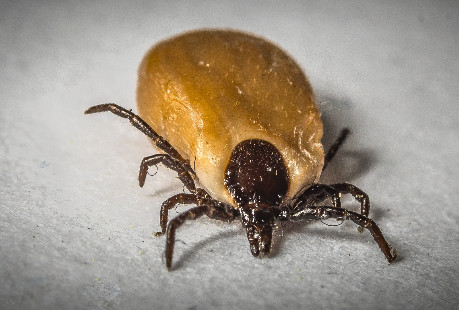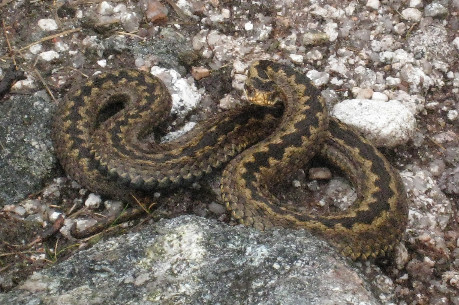Just like humans dogs can suffer from many hill related injuries and ailments and it is vitally important that you know how to prevent these or treat them accordingly if a problem does occur.
If you walk in the Scottish mountains during spring, summer and autumn it is inevitable that your dog will pick up ticks. Depending on how hairy your dog is finding them can be challenging! A tick removing device is a cheap and effective way of removing a tick once it has become attached.
It is also important to learn how to remove a tick properly.
It is advisable to check your dog thoroughly after each hill walk and for a couple of days afterwards.

It is advisable to carry a few additions to your human first aid kit for your dog. Gauze dressings and Vetwrap self-adhesive bandages are ideal.
Dogs are inquisitive and will stick their noses in many inadvisable places. Bee and wasp stings are common and during the summer months snake bites have been known to occur.
It is more common for a dog to be bitten around the mouth and nose and this may cause an allergic reaction with swelling and difficulty breathing.
It is important that you know how to deal with bites and stings and formulate a plan on how to deal with such events when potentially many miles from veterinary assistance.
See advice on how to deal with adder bites for dogs.

You must know what to do in an emergency should your dog become injured or unwell whilst on the hill.
Mountain Rescue teams will respond to an emergency involving a dog should it become unwell or injured and you are unable to get your dog off the hill yourself.
Small dogs can be carried off the hill in a rucksack and larger dogs can be carried or dragged short distances using a waterproof coat as a sling.
If moving your dog will cause it pain or further distress do not attempt to move it. Keep the dog warm and sheltered (if possible) and call Mountain Rescue. Take careful note of your position if you have to leave the dog to summon help.